► BMW Vision Neue Klasse to launch 2 September
► CEO Oliver Zipse confirms IAA launchpad
► New family of EVs on a new architecture
The next chapter of BMW electric cars is less than a month away: CEO Oliver Zipse has confirmed the new BMW Vision Neue Klasse concept car will be unveiled on 2 September at the IAA motor show on home turf in Munich – and it’s near-production ready, according to the boss.
Zipse told an earnings call that the production version will go into production in 2025 at the new plant in Debrecen, Hungary, followed by Plant Munich in 2026.
‘On 2 September the BMW Vision Neue Klasse will celebrate its world premiere,’ he told investors. ‘The date was chosen to honour a historical milestone: it will be almost 60 years to the day that BMW staked the claim of the Neue Klasse. Back then, the decision to launch a ground-breaking new product range enabled BMW’s success and kept it going over the following decades.
‘Now, once again, we are turning vision into reality: I can promise you that the Vision Neue Klasse is close to standard production and will be on the roads soon. The Neue Klasse is a mega-project that spans the entire company. It is about nothing less than the future of the BMW brand, the BMW Group and our portfolio.’
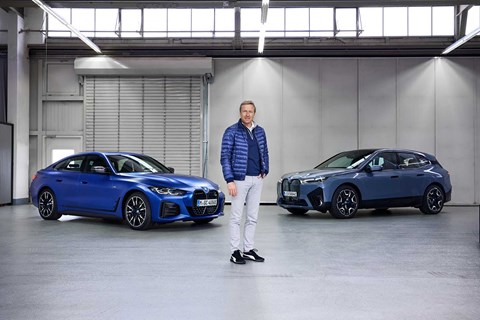
BMW CEO Oliver Zipse: CAR magazine’s exclusive interview on Neue Klasse
A pure electric alternative to the 3-series or X3 should kick off BMW’s ‘Neue Klasse’ generation of cars, Zipse has previously confirmed to CAR magazine. The cars will be based on all-new component stacks and blood new battery tech and a deep-rooted sustainability approach.
‘Neue Klasse’ is a new architecture, and over the 10 years [from 2025], we will build many cars from it,’ explains the CEO in a wide-ranging interview with CAR, with photography by Fabian Kirchbauer.
For Zipse’s view on BMW design, M Division’s future and much more, read CAR’s September 2021 issue in our back catalogue

How BMW is defining the electric Neue Klasse
The name Neue Klasse was first used on the gamechanging saloons introduced from 1962, which dragged loss-making BMW into profit and soon established the template for today’s big-selling 3-series. The 2025 Neue Klasse is charged with delivering a similar stepchange, particularly in electrification, digitalisation and autonomous driving capabilities.
The Neue Klasse’s goal is to create ‘a perfect electrically driven car,’ says Oliver Zipse.
‘We’re establishing that with the design of the architecture, asking how do we put a battery efficiently into the car, where do you put the drivetrain? On the rear: excellent! But it must also be all-wheel drive, you must also be able to put [a motor] on the front axle. If it’s a pure battery electric vehicle (BEV), that system set-up must be 100 per cent correct.’
BMW is, however, keeping its options open about whether the NK architecture will support combustion engines – which makes sense from an industrial perspective. Today both drivetrain types can go down the assembly same line, giving precious flexibility amid the uncertainty about the global rate of EV take-up. BMW builds the i4 EV and conventional 4-series on the same Munich line, for example.
‘At a later point in time, you might put another type of engine, combustion, on the front axle,’ adds the 57-year-old CEO. ‘The architecture is still BEV-centric. It will give you the absolute best electrical driving performance like any pure electric platform; there is no contradiction at all.’
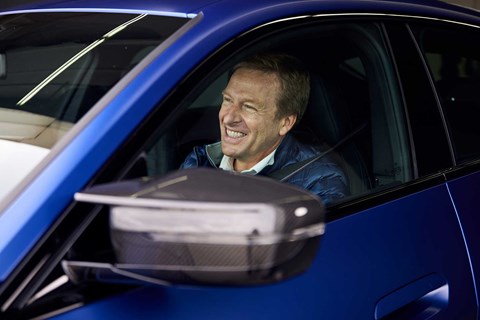
Although the car will be instantly recognisable as a BMW, expect the proportions to alter, with the ‘engine’ bay reduced with cylinder counts dropping or disappearing altogether, and the wheelbase growing to boost interior space.
Neue Klasse and next 3-series overlap
The Neue Klasse architecture will come in a ‘high’ version for bigger-wheeled SUVs such as the iX3 replacement, as well as the ‘low’ version underpinning saloons and Tourings. Will it make the 3-series obsolete? ‘It’s a good question. You’re correct, they are in the same segment. Is there a way to cover a world market with only one architecture at that point in time?
The current G20 3-series will be replaced mid-decade with the next-generation model, around the same time the first Neue Klasse cars are introduced. And Zipse is sceptical that convergence will happen sufficiently quickly to rule out a twin approach.
‘There’s a time when you might have two offerings in that segment. When you make the decision to go on to only one architecture, you must look at the market volumes on a global scale. In some fully electric markets that might work. Globally, serving 140 markets, you might come to a different conclusion.’
Sustainability baked in
The Neue Klasse will take BMW’s sustainability credentials to a new level. Every element is being forensically examined to maximise the use of secondary – or recycled – materials including steel, plastic and aluminium, and to ensure that elements can be more easily processed when a car reaches its end of life.
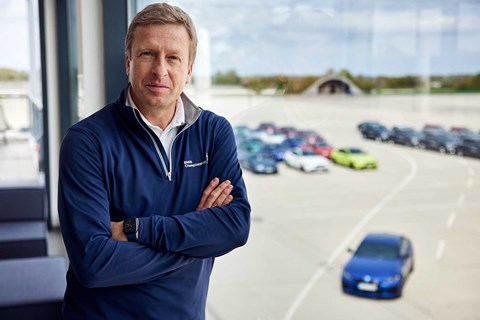
‘We can build really cool BMW driving machines that are sustainable,’ vows the boss. Reducing the amount of materials extracted from the earth – Zipse cites the planet’s eight billion inhabitants extracting 100 billion tonnes of resources in a year – is paramount, but there’s also an economic imperative.
‘This year, steel has got 30 per cent more expensive. Aluminium, plastics, rhodium, palladium, rare earths – almost anything. If you can’t buy it, like semiconductors today, you cannot produce cars. But before not being there, materials become really expensive.’
It’s hard to cost-effectively introduce recycled materials into BMW’s existing architectures, the front-wheel drive FAAR module and the rear-drive CLAR component set that stretches from 2-series coupe to X7. But the Neue Klasse provides a clean sheet of paper for including secondary materials.
‘There is no sense in not doing secondary first,’ explains the CEO. ‘During the design phase it is easy to do.’ BMW cites two examples: making sure it’s easy to remove the copper from the wiring loom (which can be several kilometres in length), or making more components, such as car seats, from a single substance to ease reuse.
Next-generation lithium batteries – for M models too
Neue Klasse BMWs will introduce a new generation of high-performance drivetrains and batteries. The latest ‘Generation 5’ batteries endow the iX3 e-SUV with up to 279 miles of range, and the i4 saloon is rated at up to 367 miles.
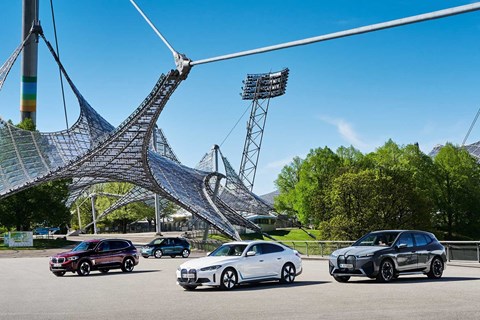
‘Only five years after our Gen 5 batteries, we will introduce Gen 6 in the Neue Klasse,’ promises Oliver Zipse. Expect higher energy density, the capability to recharge more quickly, and a further reduction in rare earth materials such as cobalt, and the use of more recycled nickel.
Gen 6 battery packs will be modular, to layer on sufficient range at an affordable price for mainstream models – or plenty to power high-performance M Division EVs.
Solid state batteries not ready for Neue Klasse’s launch
It’s too early for stepchange ‘solid-state’ batteries however, which replace the liquid electrolyte with solid materials, to yield a boost in energy density and more durability despite the high loads.
‘We’ve just invested into solid state and very rapidly we will have the first showcases of it. But there’s a big difference between a prototype in the test field and industrialisation,’ remarks the CEO.
‘The Neue Klasse will not start with [solid state] but with the architecture spanning maybe 15, 20 years, the likelihood that the Neue Klasse will see solid state at some point is very high.’
And what’s the latest on autonomous BMWs?
The car industry has become less bullish about autonomous cars in the short-term. ‘We can build an autonomous car,’ says Oliver Zipse. ‘But what we learned in the last five years is how quickly – or not – the regulatory environment moves.’
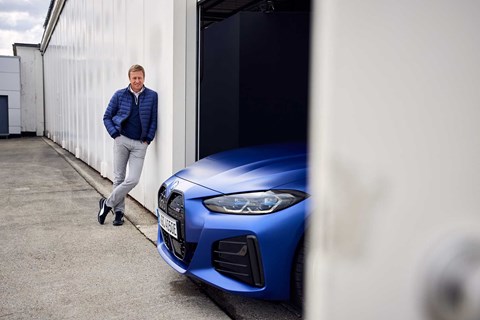
Because autonomy is uncharted water, it’s difficult for regulators to create a testing regime that they know is sufficiently all-encompassing to ensure the cars are safe.
That’s why today’s Level 2 driver assistance demands the driver remains ‘hands-on’. How to safely switch control between the car driving and a potentially ‘eyes-off’ driver scuppered the introduction of the Audi A8’s proposed Level 3 system, despite it being announced in 2017. Development is also held back as manufacturers struggle to get regulatory approval to test on road at autobahn speeds, for example.
The other challenge is cost. Level 3 autonomy requires expensive detection equipment including laser-based LIDARs, in addition to radars and cameras (in duplicate to overcome any individual component failure). ‘There will be no Level 3 autonomy without LIDAR,’ explains Zipse. ‘That means only the very highest [priced] vehicles will be able to afford that initially. The iX will see Level 3 autonomy in its lifetime.’
The Neue Klasse’s digital capabilities
Level 4 autonomy – with the car capable of doing all the driving within an extensively mapped area – will require ultrafast and robust cloud computing, with cars in communication with intelligent infrastructure such as traffic lights and hazard warning systems. The Neue Klasse architecture certainly needs to be future-proofed for this level of autonomy.
Car explains the autonomous driving levels from 1 to 5!
Over-the-air updates will frequently refresh the car’s Operating System, even down to regional variations depending on different consumer tastes. BMW is also predicting a growing stream of revenue from owners activating features from the car’s online shop, much like using Apple or Google’s app stores.
BMW’s goal is to put 10 million full EVs on the road by circa 2030, and cut CO2 emissions over a vehicle’s life cycle by a third, with the Neue Klasse at the heart of those goals. It all adds up to BMW’s BNW, or Brave New World.